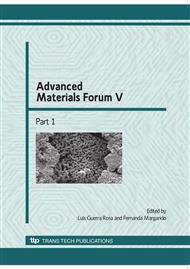p.206
p.214
p.220
p.226
p.233
p.239
p.245
p.253
p.260
Strength Prediction of Adhesively-Bonded Scarf Repairs in Composite Structures under Bending
Abstract:
This work reports on the experimental and numerical study of the bending behaviour of two-dimensional adhesively-bonded scarf repairs of carbon-epoxy laminates, bonded with the ductile adhesive Araldite 2015®. Scarf angles varying from 2 to 45º were tested. The experimental work performed was used to validate a numerical Finite Element analysis using ABAQUS® and a methodology developed by the authors to predict the strength of bonded assemblies. This methodology consists on replacing the adhesive layer by cohesive elements, including mixed-mode criteria to deal with the mixed-mode behaviour usually observed in structures. Trapezoidal laws in pure modes I and II were used to account for the ductility of the adhesive used. The cohesive laws in pure modes I and II were determined with Double Cantilever Beam and End-Notched Flexure tests, respectively, using an inverse method. Since in the experiments interlaminar and transverse intralaminar failures of the carbon-epoxy components also occurred in some regions, cohesive laws to simulate these failure modes were also obtained experimentally with a similar procedure. A good correlation with the experiments was found on the elastic stiffness, maximum load and failure mode of the repairs, showing that this methodology simulates accurately the mechanical behaviour of bonded assemblies.
Info:
Periodical:
Pages:
233-238
Citation:
Online since:
January 2010
Price:
Сopyright:
© 2010 Trans Tech Publications Ltd. All Rights Reserved
Share:
Citation:


